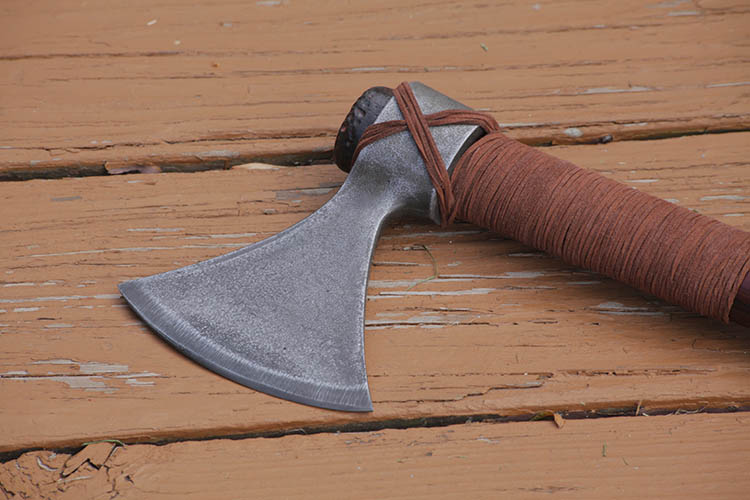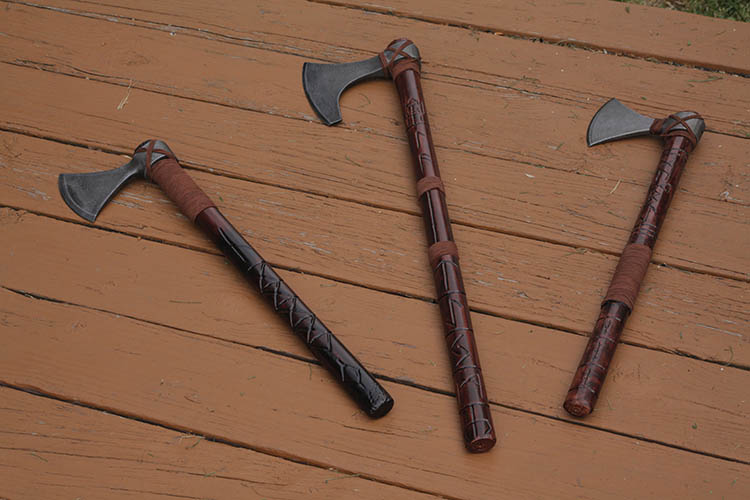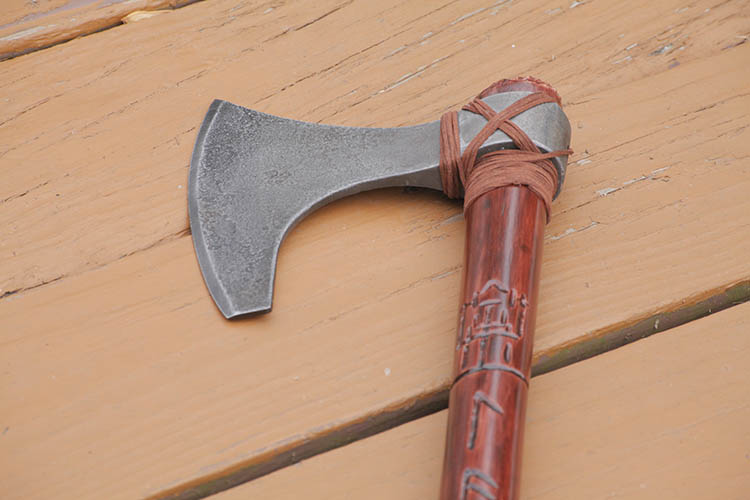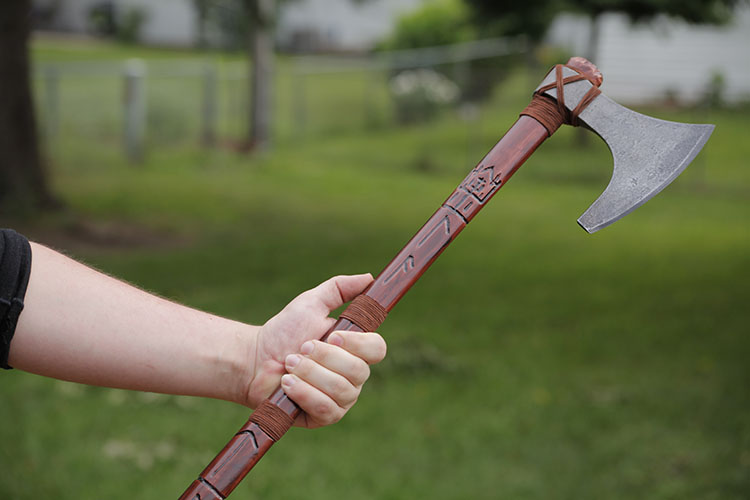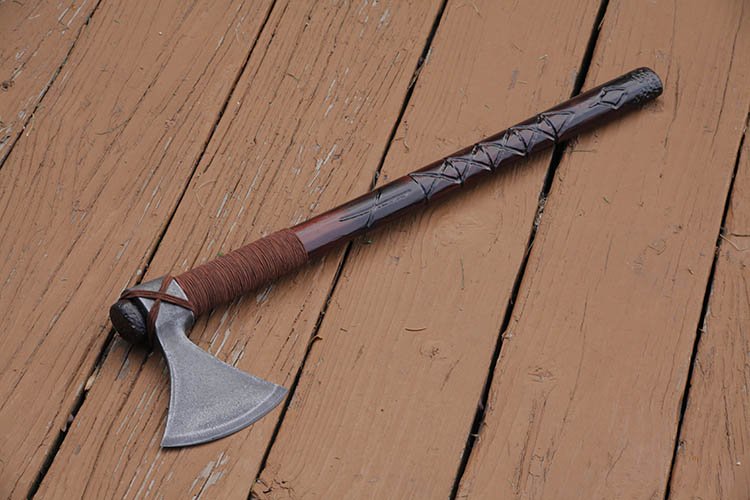Recent Articles
-
Christmas Sword Buying Guide 2025
Dec 03, 25 10:53 PM
How to Patina a Sword
It is not that hard to patina a sword - after all, most collectors of functional swords do everything in their power to PREVENT their sword from rusting. But we aren't talking about putting some black or red spots here and there - we are talking about taking a nice shiny new sword and making it look like it was forged 500 years ago..
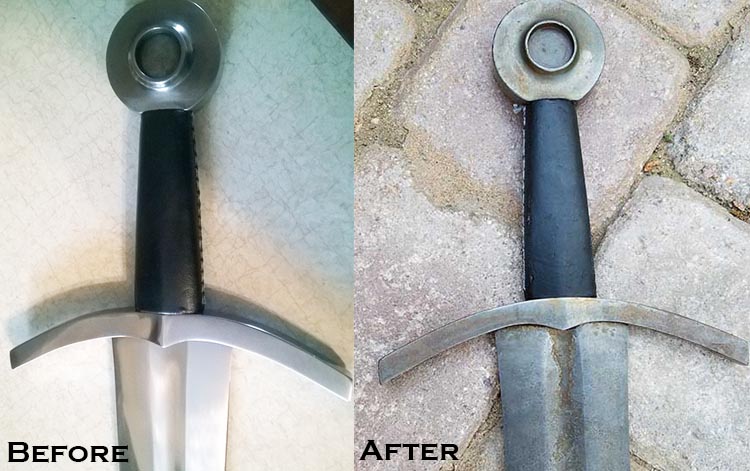
What You Will Need?
To patina a sword - the very first thing you will need is, of course, a sword to patina.. And preferably a cheap one..
Deepeeka of India are a good choice as many of their historically inspired medieval, Viking and ancient European swords - but the sword that was antiqued above, the Windlass Steelcrafts Oakeshott Type XIV, was snapped up by a lot of people when it went on special in the closeouts and last chance specials section of Museum Replicas Limited for under $100...
Anyway, aside from the sword all you need is some vinegar, some salt and some time..
Easy Way to Patina a Sword - Method #1
Why Patina a Sword?
Apart from the fact that it makes a sword look like an antique, there are actually some benefits to this - a nice even patina will actually create a PROTECTIVE LAYER against future rust, and as it is only on the surface of the blade, will not negatively effect its functionality. It is also something that you can do if a sword has accidentally rusted somewhere in a bad way that won't clean up - if you can't beat 'em...
The basic recipe for antiquing swords is a pretty simple one.
Just take a spray bottle (like a hairdresser uses) and fill it up with
vinegar and a fair amount of salt (there is no specific formula, just a
good mix so that the salt largely dissolves in the water).
Shake
the spray bottle up and give the sword a spray, leave for a couple of
nights and see how it progresses. It should start to bubble a bit with
red rust marks. Apply more as desired and after a few days, lightly
remove the red rust with a scotch brite pad and viola - instant antique
and patina, making a modern replica look several hundred years old in a
few nights.
Here's how one of our members did it with a cheap Deepeeka Viking sword. The 4 panels represent the sword at the beginning of the process, and then 24, 48 and 72 hours of white vinegar + salt spray. After each day of aging, the surface grunge was wiped off to expose new pits and discolorations before respraying.
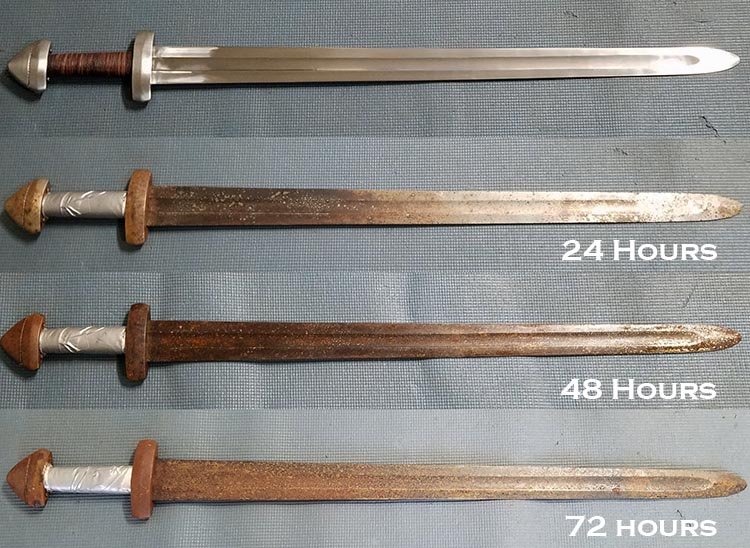 a few hundred years in a few days..
a few hundred years in a few days..For an even better effect, this particular sword was then buried in a 'shallow grave' of wet soil for three days, and on the third day..

To refine the antique and give it that 'museum' look - a solution of baking soda and water will neutralize the acid in the aging process, stopping the rusting. To clean it up use WD-40 with a very mild abrasive such as 000 steel wool. Very fine sandpaper with the oil also should work (1000 grit). If that’s too fine try the next coarser grit up.
How to Patina a Sword - Method #2
This technique is a variation on the first, and was used on the Windlass Oakeshott sword at the beginning of this article.
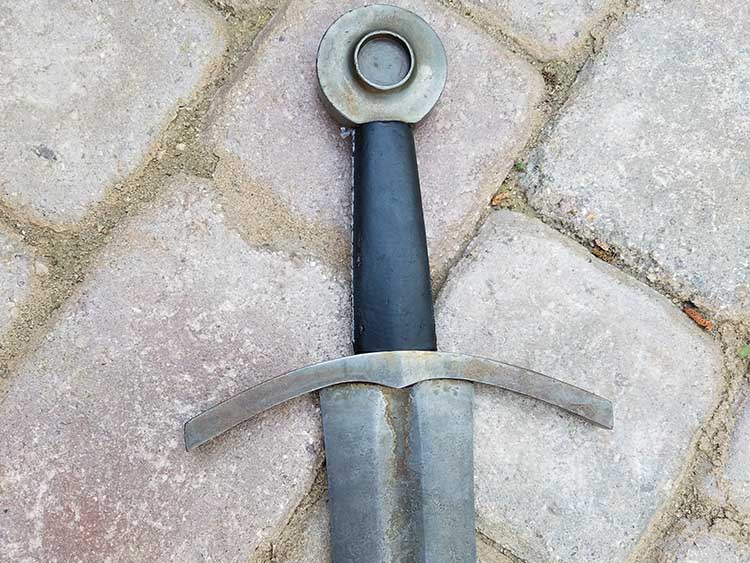
First, any protective oil or grease is wiped off - then several minutes of hard
shaking in a big plastic box full of rocks and 16-penny nails. Then
three hours bathing in warm water mixed with white vinegar, apple cider
vinegar, lemon juice, regular salt, and potassium ("lite") salt. Ten or
so removals, pat-downs, and brief air-dries during the bath.
Then
several days sitting out a damp area outdoors to let the patina cure - don't wipe it down too soon or the pattern will come off.
The sword below sat around for three days, and when the patina was wiped off with some cloth and mineral spirits it revealed this cool looking faux Damascus/wootz-ish pattern
remained.
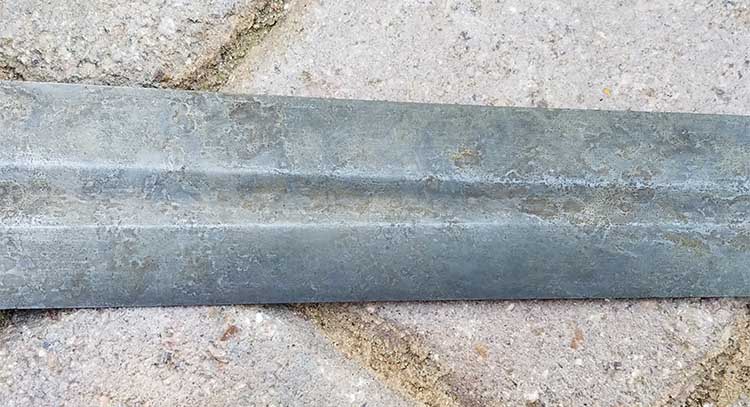
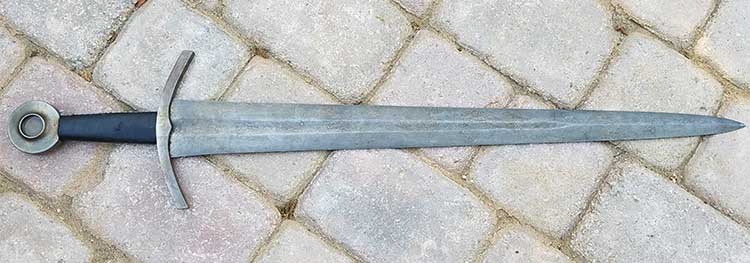
Bonus Section 1 - Patina on an Axe
Below is a small gallery showing results using the same technique on an Axe (click on any image to enlarge and open the gallery).
Bonus Section 2 - "Chinese Mustard Patina"
What exactly is 'Chinese Mustard Patina" I hear you ask? Well it is one very unusual way some SBG members use to patina a sword, axe or knife to get a different effect like this..
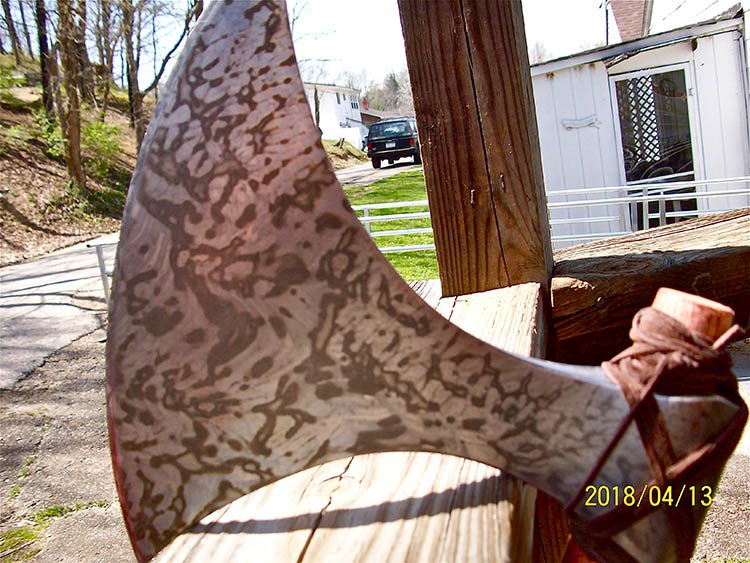
SBG Member WVfishguy explains how it's done:
This patina makes the steel pretty much rust proof. When I first did
this, I did not expect it to be such a good rust blocker, but I have
this finish on several weapons and I've NEVER seen any rust or
discoloration on any steel treated in this manner.
I use the
mustard from packets we get when we order Chinese food. This is Chinese
style hot mustard. I smear the mustard on the metal, then take a paint
brush and "paint" the mustard on the steel.
Then I use the brush
to dab the metal with larger globs of mustard. Each mottled area is
where the mustard is placed thickly. It took me a few times to get my
technique down.
On this axe, I left the mustard on all night.
The next morning, I placed the axe head in a sink of soapy water, let it
soak for a while, and scrubbed the dried mustard off with a sponge.
The
pattern is pretty much up to how you daub the mustard on. If you are
very skillful, I'm sure you could get something like a pattern welded
steel appearance. That's what I was shooting for.
I've used other types of mustard, but nothing works as well as the hot Chinese.
 Same technique used in a different way produces an interesting effect like this
Same technique used in a different way produces an interesting effect like thisFurther Resources
There aren't any videos or tutorials for how to patina a sword on YouTube, however there is a good one on how to Patina a knife in a few hours by immersing it in boiling water and vinegar (harder to do with a sword obviously, but the basic principles remain the same).
The video also demonstrates that a blade that has a patina is still perfectly functional - though you will probably want to touch up the edges again a little (click here to learn several sword sharpening methods).
For more information on antiquing swords - including the wooden components, brass, etc the article the instant antique at MyArmory is an excellent and recommended read.
I hope this information on how to patina a sword has been helpful. To return to Free Sword Customization Tutorials from how to patina a sword, click here
Special thanks to SBG members Viece and nDave for the original sword patina ideas and Owl, WVfishguy and Solaris for the bonus section

Buying Swords Online Can Be DANGEROUS!
Find the Best Swords in the:
Popular & Recommended ARTICLES

The ONLY true free online magazine for sword enthusiasts. Delivered once a month on the 1st day of the month, no filler and no BS, just the latest sword news & info delivered straight to your inbox.

